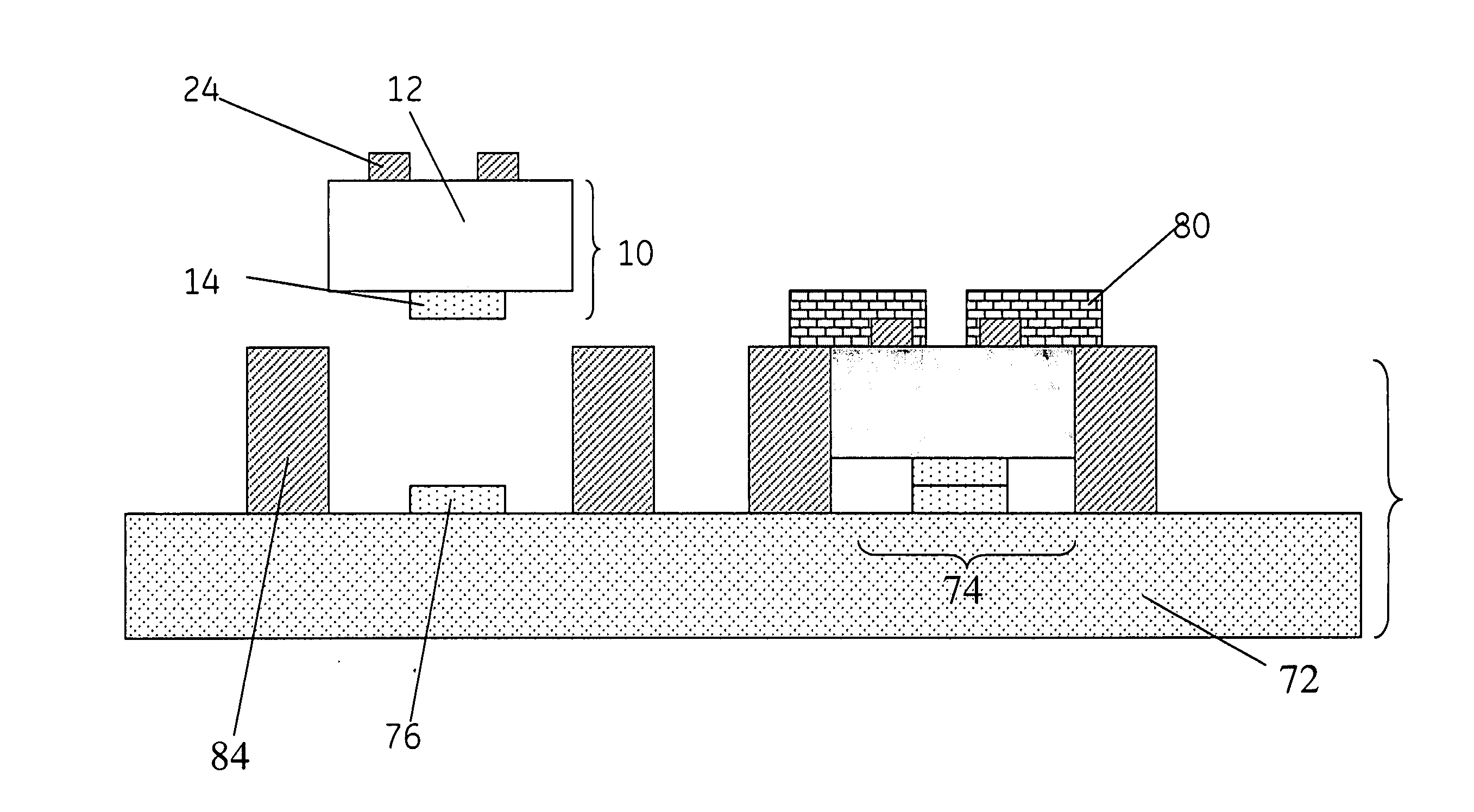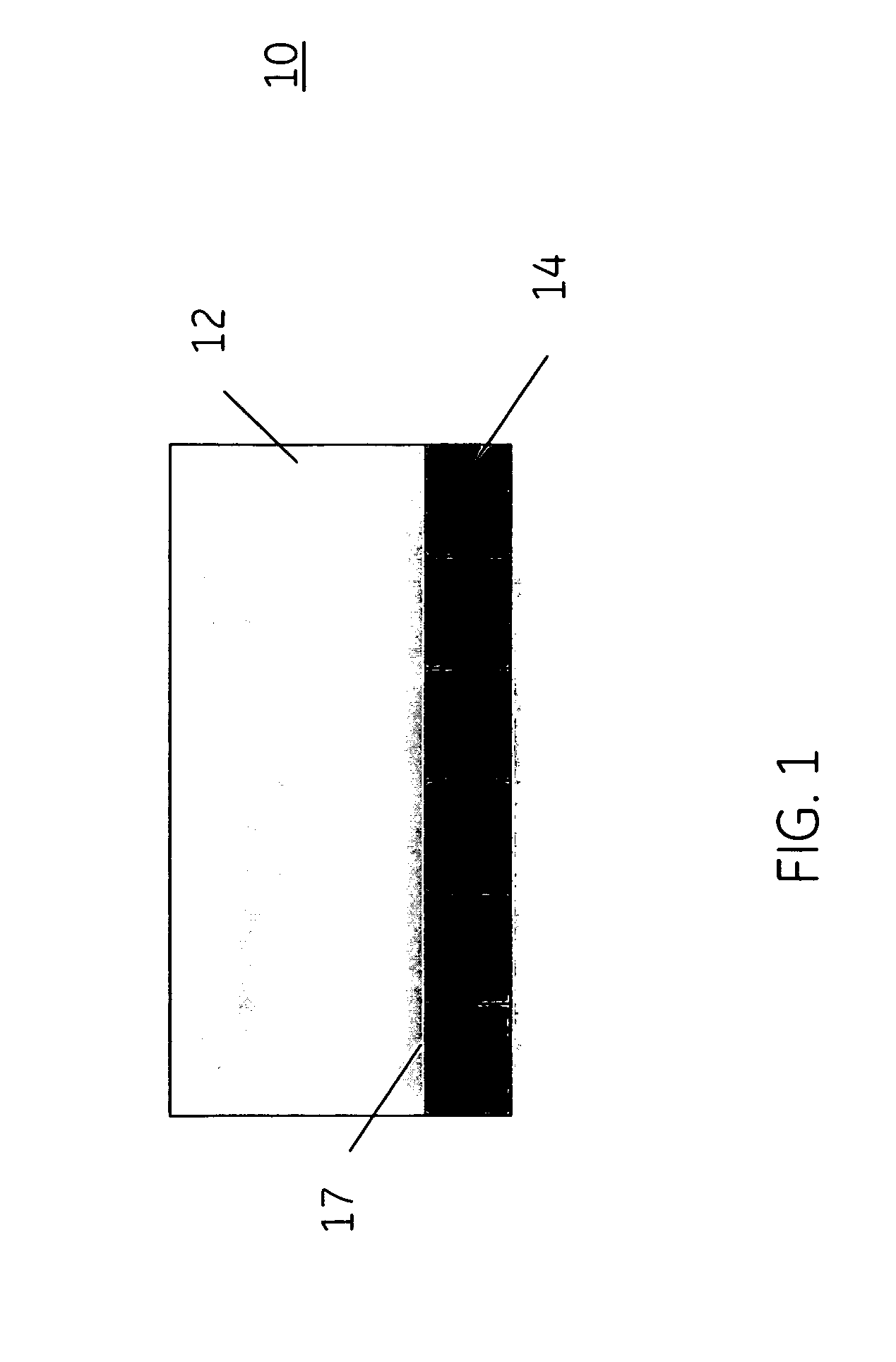Articles and assembly for magnetically directed self assembly and methods of manufacture
- Summary
- Abstract
- Description
- Claims
- Application Information
AI Technical Summary
Benefits of technology
Problems solved by technology
Method used
Image
Examples
example
[0038]The magnetic film 14 may be fabricated from a variety of different materials using a variety of different techniques. In one non-limiting example illustrated by FIG. 11, the magnetic film 14 comprises superparamagnetic nanoparticles 34 embedded in a polymer binder 36. Non-limiting examples of superparamagnetic nanoparticles 34 include Fe3O4, γ-Fe2O3, Ni80Fe20, NiFe2O4, MnFe2O4, MnZn ferrite, NiZn ferrite, Ni, Fe and combinations thereof. As is known in the art, certain magnetic nanoparticles prone to oxidation may be coated with a barrier layer to reduce oxidation. Non-limiting examples of barrier layers (not shown) include Au, Ag, SiO2, Al2O3, TiO2 and Si3N4. Non-limiting examples of polymer binders 36 include thermosetting compounds such as PI-2555 polyimide resin from HD Microsystems and thermoplastics such as nylon. The magnetic film 14 may also contain additional dispersants to reduce particle agglomeration and / or adhesion promoters as is known in the art. The compound ca...
PUM
| Property | Measurement | Unit |
|---|---|---|
| Auxiliary magnetic field | aaaaa | aaaaa |
| Magnetic field | aaaaa | aaaaa |
| Adhesivity | aaaaa | aaaaa |
Abstract
Description
Claims
Application Information
 Login to View More
Login to View More - R&D
- Intellectual Property
- Life Sciences
- Materials
- Tech Scout
- Unparalleled Data Quality
- Higher Quality Content
- 60% Fewer Hallucinations
Browse by: Latest US Patents, China's latest patents, Technical Efficacy Thesaurus, Application Domain, Technology Topic, Popular Technical Reports.
© 2025 PatSnap. All rights reserved.Legal|Privacy policy|Modern Slavery Act Transparency Statement|Sitemap|About US| Contact US: help@patsnap.com



